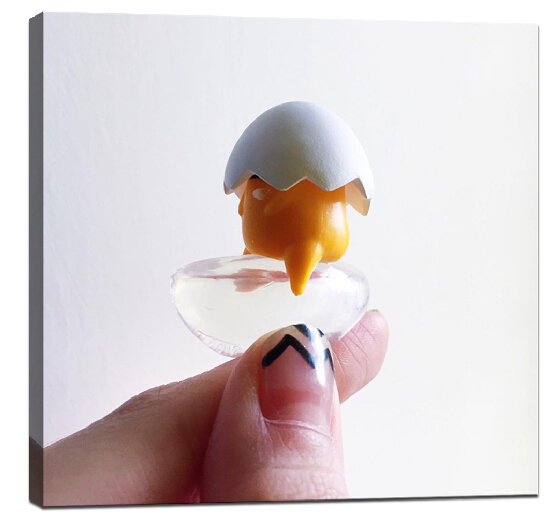Nine Keys for Taking Moving Food Photographs
Food photography is more than just capturing a plate of food—it’s about telling a story. One of the most challenging yet exciting aspects of food photography is capturing motion, such as liquids splashing or food falling onto a plate. Whether you are a professional photographer or a hobbyist, mastering the art of moving food photography can take your shots from good to extraordinary. If you're looking to preserve your perfect food photos, consider turning them into high-quality canvas prints that bring your culinary art to life.
In this guide, we’ll break down nine key tips for taking stunning moving food photographs that will make your images pop, whether you're using a DSLR, mirrorless camera, or even a smartphone. Let’s dive in!
1. Use a Fast Shutter Speed
One of the most crucial aspects of photographing movement is controlling the shutter speed. To freeze motion, a fast shutter speed of 1/500s or faster is necessary. This helps avoid any blurring, ensuring that the food or liquid remains sharp in your photo. Experiment with various speeds based on the type of movement you’re trying to capture.
2. Increase ISO for Low-Light Situations
To maintain a fast shutter speed, you might need to increase your camera’s ISO setting, especially in low-light environments. Higher ISO values can help prevent your photos from becoming underexposed while capturing the moving subject. However, be cautious of going too high, as it can introduce noise to your images.
3. Use Continuous Autofocus (AI Servo)
When photographing food in motion, it’s essential to have your camera focus continually on the moving object. Using Continuous Autofocus (or AI Servo on Canon cameras) ensures that the camera tracks the motion and keeps the subject sharp as it moves. This feature is perfect for capturing fast action, like ingredients falling into a bowl.
4. Stabilize Your Camera
A steady camera is key to any sharp photo, but it's especially important when capturing food in motion. Use a tripod or handheld stabilizer to keep your shots steady. If you're photographing splashes or droplets, consider using a high-speed sync flash to freeze the action while keeping the camera stable.
5. Lighting is Everything
Lighting is one of the most crucial elements in food photography. When shooting moving food, it's essential to have proper lighting to capture both the motion and texture of the food. Natural light works great, but for more controlled conditions, invest in a softbox or a flash. Side lighting can help enhance textures, while backlighting adds drama to splashes or flying ingredients.
6. Plan Your Shot
Think ahead about how you want to capture the motion. Whether it’s a splash of milk or a droplet of chocolate syrup falling on a dessert, consider the angle, timing, and the visual effect you want to create. Pre-visualizing the shot helps in adjusting lighting, shutter speed, and even the setup to achieve the perfect shot.
7. Experiment with Burst Mode
Food photography often requires capturing a sequence of moments, especially in dynamic situations. Burst mode allows your camera to take several shots in quick succession, increasing your chances of getting the perfect moving shot. Experiment with burst mode to capture multiple frames and select the best one.
8. Use Props and Backgrounds Effectively
Props can enhance the motion in your photos and provide context. A splash of sauce on a plate or a flying sprinkle of herbs can add life to your shot. Be mindful of the background—simple, neutral colors or rustic textures can highlight the food and movement without distracting from the subject.
9. Post-Processing to Enhance Motion
After you’ve captured your moving food shots, post-processing can help accentuate the motion. Use editing software to adjust the sharpness of the moving elements, blur the background for depth, or enhance the colors to make the food pop. You can even experiment with motion blur techniques to emphasize the movement in your photos.
Conclusion
Photographing moving food might seem challenging at first, but with the right tools and techniques, you can master it. From controlling your shutter speed to understanding the importance of lighting, each of these steps will help you capture motion in food photography. Once you have those stunning shots, don’t forget to preserve them as canvas prints—they’ll make a striking addition to any kitchen or dining space, bringing the dynamic beauty of food into your home.
Recent Posts
-
The Best Canvas Prints for Your Bedroom: Create a Relaxing Atmosphere
Choosing the right artwork for your bedroom can completely transform the way the space feels. A bedr …11th Dec 2025 -
How to Mix Canvas Prints with Other Home Decor Elements
Creating a well-designed home interior requires more than simply selecting beautiful artwork. The re …11th Dec 2025 -
Top 5 Affordable Canvas Print Ideas for Your Children's Room
When it comes to decorating your child's room, it's important to create a space that feels as fun, p …8th Dec 2025